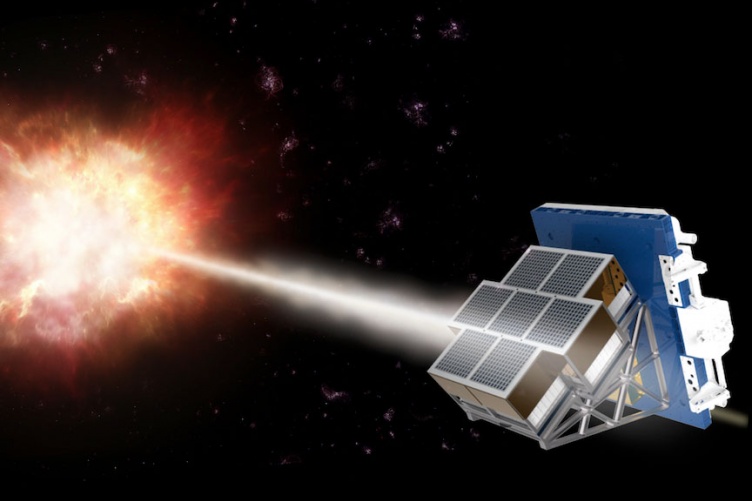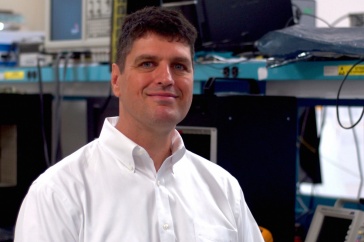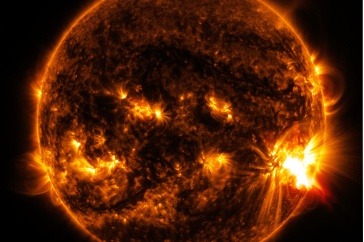
Researchers from the UNH Space Science Center are taking new steps to study gamma-ray bursts in the far reaches of the universe, thanks to a $500,000 grant from NASA.
NASA has selected science proposals from four teams — including one from UNH led by Mark McConnell, professor of physics and astronomy — to further develop their research objectives over the next nine months in what’s called a “mission concept study.” NASA will then select two of these projects to become the next astrophysics missions in NASA’s Explorer Program, with mission launches targeted for 2025. If selected, the project would receive $75 million to conduct the mission.
"LEAP would offer the best gamma-ray polarimeter that anyone has flown to date. It would promise to revoluntionize our understanding of the gamma-ray burst phenomenon."
With collaborators from around the world, most notably at the Southwest Research Institute (San Antonio, Texas), at NASA’s Marshall Space Flight Center (Huntsville, Alabama), and at the University of Alabama in Huntsville, the UNH-led team has proposed to design and build an instrument called LEAP (LargE Area burst Polarimeter). LEAP will attach to the International Space Station and record the bright flashes of intense gamma rays that come from faraway sources, including massive star supernovas and compact neutron star mergers — events that lead to the formation of a black hole.
McConnell, who also serves as the director for the Southwest Research Institute’s Department of Earth, Oceans, and Space located on the UNH-Durham campus, has a long history of conducting astrophysics research via spacecraft and high altitude scientific balloon flights. LEAP would build on this legacy, utilizing technology that will help scientists to better understand the nature of gamma ray bursts, which represent some of the largest releases of energy in the known universe. LEAP will measure the polarization of gamma rays to probe the role of magnetic fields in focusing the energy release into narrow beams of radiation. Polarization refers to the magnitude and direction of vibrating electric fields that make up the gamma radiation that we receive from space.
“Using polarimetry to study gamma ray bursts has been the goal of our balloon program for a while, but it’s challenging to do with balloons,” McConnell says, noting the atmospheric absorption and limited flight time afforded by balloons. Astrophysicists need to get their instrumentation above the Earth’s atmosphere to collect more high-quality data from distant galaxies, so mounting LEAP on the International Space Station is a better alternative for this type of research, he explains.
“LEAP would offer the best gamma-ray polarimeter that anyone has flown to date,” McConnell says. “It promises to revolutionize our understanding of the gamma-ray burst phenomenon.”
The Institute for the Study of Earth, Oceans, and Space (EOS) is UNH’s largest research enterprise, comprising six centers with a focus on interdisciplinary, high-impact research on Earth and climate systems, space science, the marine environment, seafloor mapping, and environmental acoustics. With more than $43 million in external funding secured annually, EOS fosters an intellectual and scientific environment that advances visionary scholarship and leadership in world-class research and graduate education.
-
Written By:
Rebecca Irelan | Institute for the Study of Earth, Oceans, and Space | rebecca.irelan@unh.edu | 603-862-0990



















































